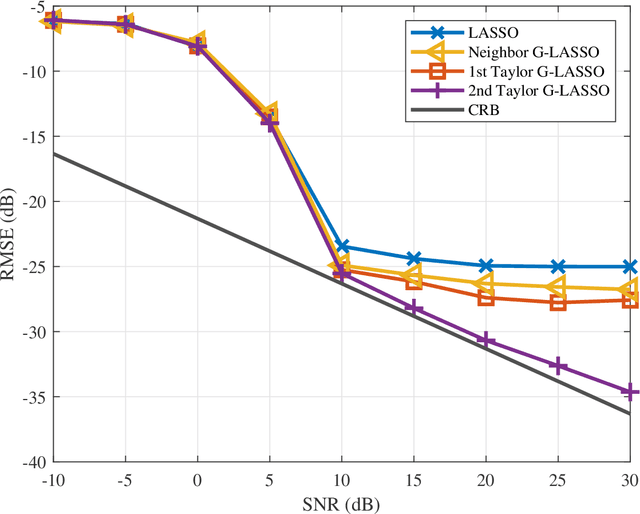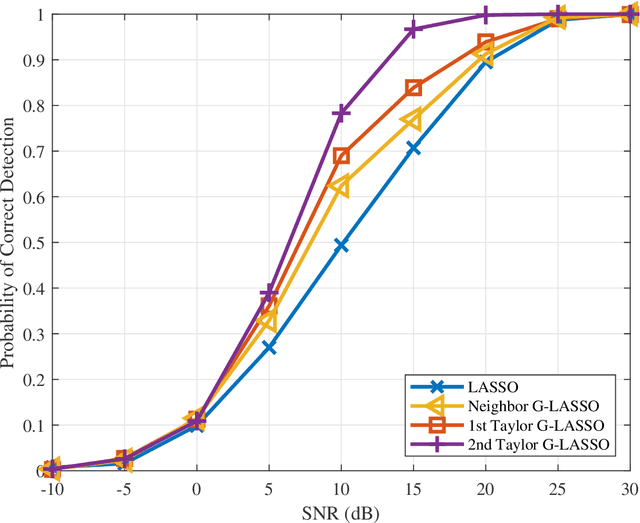Off-Grid Direction-of-Arrival Estimation Using Second-Order Taylor Approximation
Paper and Code
Dec 10, 2021



The problem of off-grid direction-of-arrival (DOA) estimation is investigated in this paper. We develop a grid-based method to jointly estimate the closest spatial frequency (the sine of DOA) grids, and the gaps between the estimated grids and the corresponding frequencies. By using a second-order Taylor approximation, the data model under the framework of joint-sparse representation is formulated. We point out an important property of the signals of interest in the model, namely the proportionality relationship, which is empirically demonstrated to be useful in the sense that it increases the probability of the mixing matrix satisfying the block restricted isometry property. Simulation examples demonstrate the effectiveness and superiority of the proposed method against several state-of-the-art grid-based approaches.
 Add to Chrome
Add to Chrome Add to Firefox
Add to Firefox Add to Edge
Add to Edge